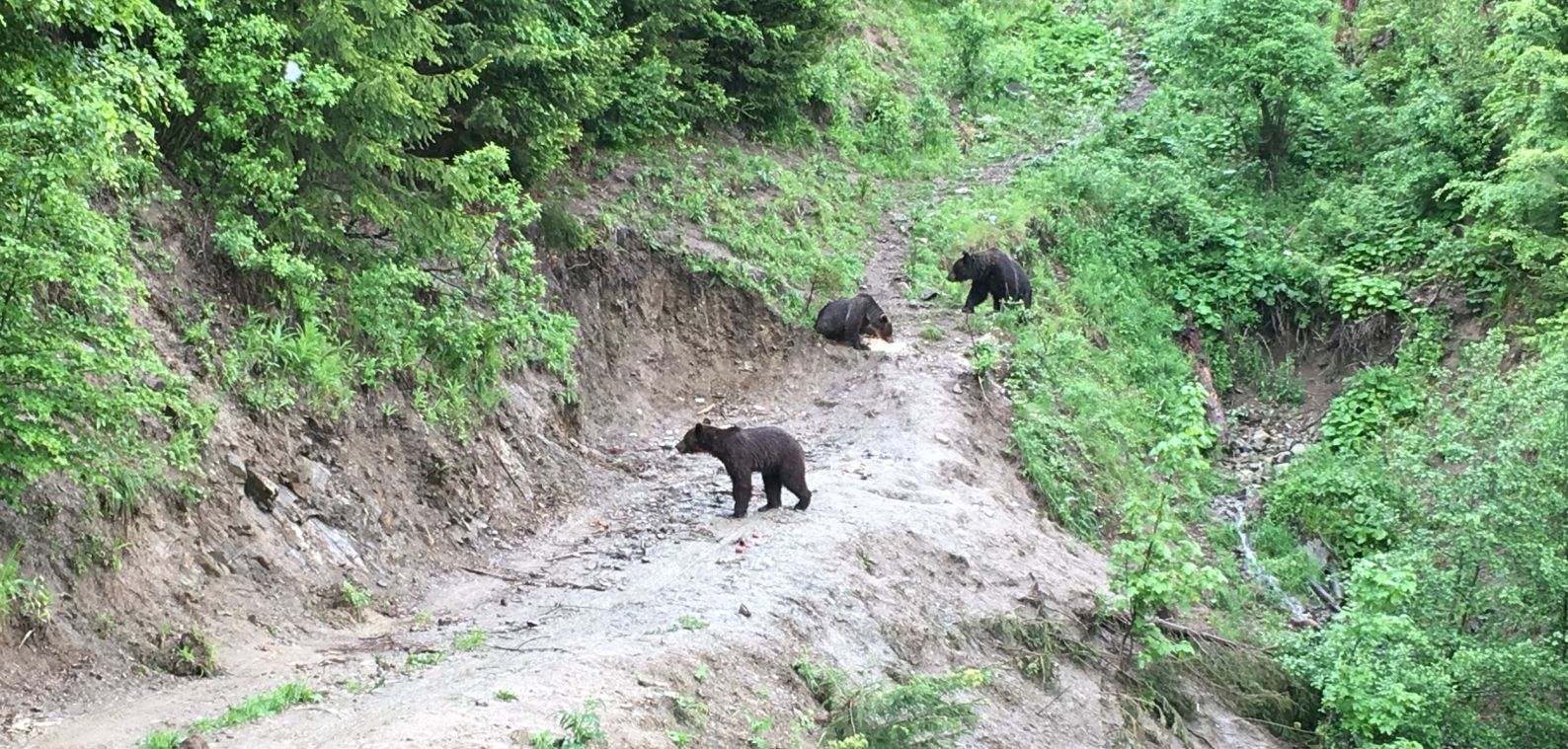Bears and humans- a sensitive interaction

Romania is known to be the country with the greatest number of brown bears in Europe. This is great at first sight, however, it is also causing some troubles locally. Local news about bears sometimes sounds terrifying… that’s the style of catchy news, after all, to exaggerate things. But even those types of news were rooted in a problematic situation.
Some mountain resorts in Romania are located on the animals’ migration corridor. And it’s pretty obvious that where there are humans there are also food sources for bears. And no, it’s not the humans themselves but the waste they leave behind and their food sources. Luckily there haven’t been any bear attacks on humans in the mountain resorts. That, of course, if they are left alone, sometimes people want to take selfies with the animals, forgetting they are still wild animals even if they stand next to the tarmac roads and buildings.
The garbage bins are free and easy meals for the bears and it’s obvious they wouldn’t say no to that. In some settlements where people have orchards or livestock the temptation for the bears is present as well.
Under those circumstances, it’s understandable why not everybody is happy with having the bears around.
But what is then the solution? Contrary to what some might think, shooting or relocating bears would probably not solve the situation.
A new type of monitoring project took place for the first time in Romania. The previous large predator surveys were mainly conducted by doing field observations. Bears directly or their tracks were counted but chances were that the same animal was counted several times by different teams since their area is pretty large.
The Conservation Carpathia Foundation collected in 2017-2018 almost 1500 samples of excrement and hair and did a genetic analysis. They identified 283 bears (137 females and 146 males)on a range of 1200 square kilometres. In parallel, they used the data collected by the GPS collars mounted on some of the monitored bears. One of them covered the area of 4 larger administrative regions in just a few months. Another important conclusion was that out of the 283 bears, only 21 were opportunist bears which attacked livestock and lost their fear of humans.
These types of science-based studies should be the main element when deciding what solutions are sustainable. Fear and panic caused by news could unfortunately lead to turning the locals against the wildlife and wanting them to get rid of bears.
In the southeastern part of Transylvania, in a mountain resort called Tusnad, there’s already a positive approach towards the bear visitors. Its goal is to determine bears to be less interested in coming into the settlement and to help them keep their natural instincts of avoiding humans.
Tusnad is at the foothills of several ranges of the Eastern Carpathians, therefore an ecological corridor for bears to cross. Bears on the streets were a very common sight.
A recent study conducted there in 2021 found that over 70% of the food sources are in orchards. They counted all fruit trees in and near the town and will either set electrical fences where it makes sense or cut down the more isolated ones. Then, an approach towards waste management followed. At the moment a new type of bear-proof bin is being tested and if successful all the bins in the area will be replaced.
A bear observatory, which initially was welcomed by nature lovers, was closed down recently because it was located too close to the resort. The ones that we use in our tours are located in the depths of the woods exactly because by keeping the bears interested to search the food around them, they are less tempted to go further down the valley into people’s orchards and even settlements.
With proper and sustainable management of human-bear interaction, there are many opportunities. And we could benefit from having the largest brown bear population in Europe if we treat the situation right. Research hubs and info centres could be created to serve a purpose for both science and wildlife tourism. Through educating ourselves we can simplify our co-habitation with those majestic creatures.
